- DREAMHOLIDA LIMITED 14 SEDDON STREET MANCHESTER M12 4GP
- Working Day : Monday - Firday (9AM - 5PM)
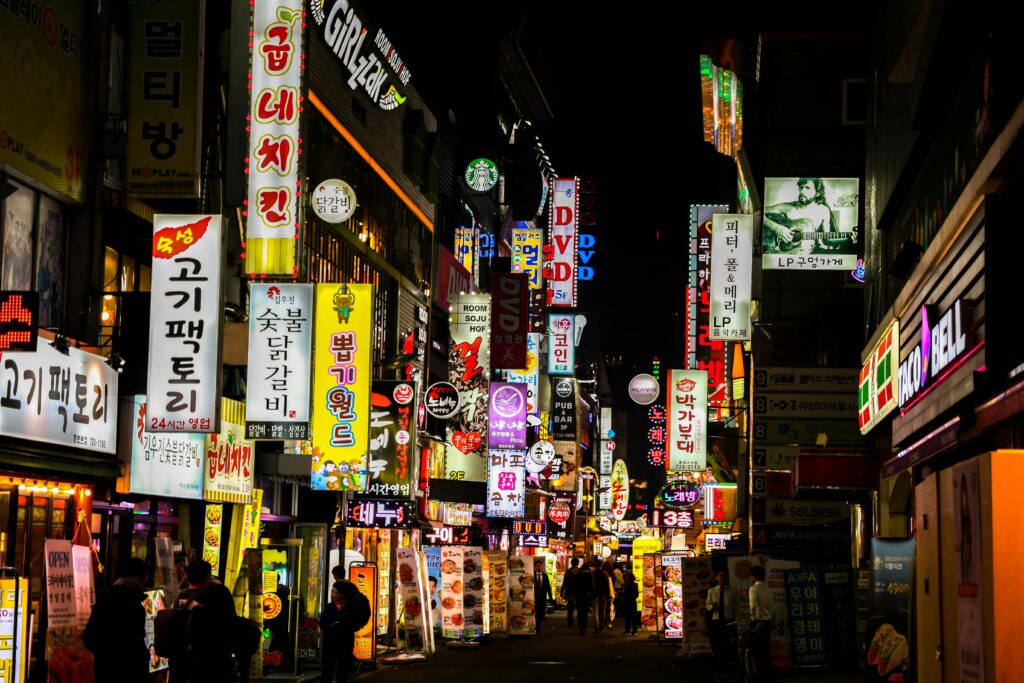
SOUTH KOREA
South Korea, officially known as the Republic of Korea, is an East Asian country celebrated for its rich history, vibrant culture, and technological innovations. The capital city, Seoul, is a bustling metropolis renowned for its modern skyscrapers, efficient public transportation, and significant influence on pop culture, particularly through K-pop music and Korean dramas. South Korea’s culinary scene is also notable, featuring delicious dishes such as kimchi, bibimbap, and bulgogi. The country places a strong emphasis on education, boasting a high literacy rate and esteemed universities. Moreover, South Korea is home to stunning natural landscapes, including mountains, national parks, and picturesque coastal areas. Beyond its cuisine, South Korea is recognized for its thriving K-pop music industry and popular television dramas, as well as innovative technology products from major companies like Samsung and LG. These cultural exports have garnered international acclaim and helped highlight Korea’s creativity and talent on the global stage.
Weather
South Korea experiences four distinct seasons: spring, summer, fall, and winter. While weather can vary by region, summers tend to be hot and humid, whereas winters can be quite cold, with some areas experiencing snowfall. Spring and fall are particularly pleasant, with mild temperatures that make these seasons popular times for travel. It’s advisable to check the specific weather forecast for your intended destination to pack appropriately. The ideal times to visit South Korea are during spring and fall. In spring, visitors can admire the breathtaking cherry blossoms that bloom nationwide, creating stunning landscapes. Fall is equally appealing, with comfortable weather and vibrant autumn foliage. These seasons provide ideal conditions for exploring South Korea’s attractions and engaging in outdoor activities.

Food and Culture
Korean cuisine vividly reflects the country’s rich culture and history. Known for its bold flavors and diverse ingredients, dishes range from the iconic kimchi—spicy fermented vegetables—to sizzling bulgogi, marinated grilled beef. Meals typically include several side dishes, called banchan, which complement the main courses and create a harmonious balance of tastes. Food is central to Korean culture, fostering connections among families and communities as they gather around the dining table. Traditional dining etiquette emphasizes respect for elders and the act of sharing food, reinforcing social bonds. Whether savoring a hearty bibimbap or indulging in a comforting bowl of hotteok (sweet pancakes), Korean cuisine offers a delightful culinary journey that celebrates the nation’s gastronomic heritage.
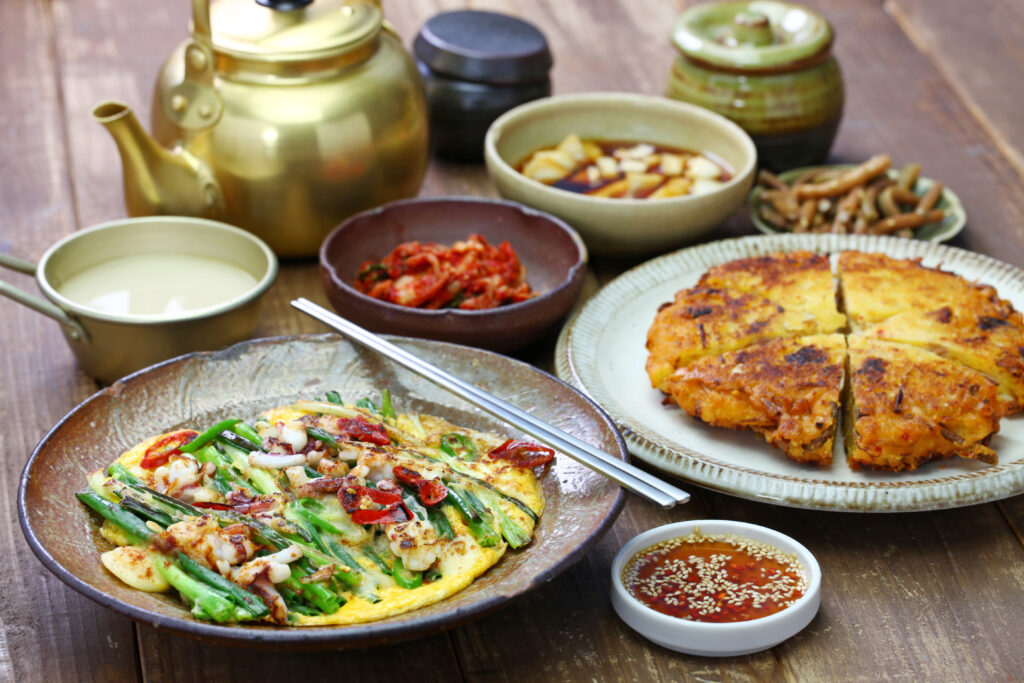
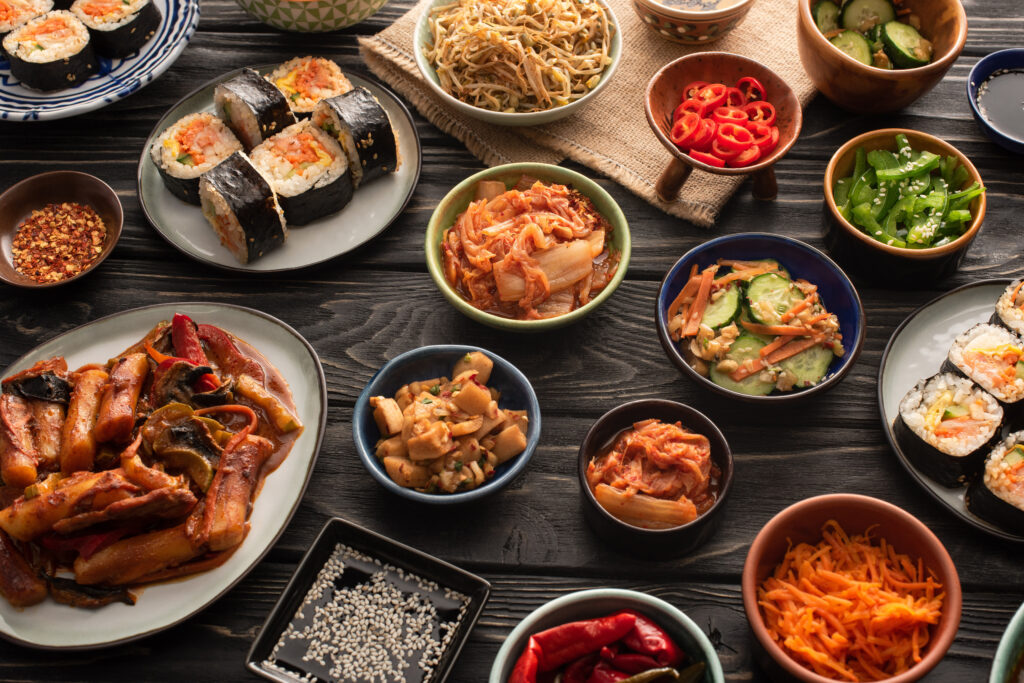
Major Cities
Seoul:
Seoul, the capital of South Korea, is a vibrant metropolis that beautifully fuses modernity with tradition. This bustling city serves as a hub for culture, technology, and history. Visitors can explore iconic landmarks such as Gyeongbokgung Palace, Bukchon Hanok Village, and N Seoul Tower, which offer a glimpse into Korea’s rich heritage. Seoul is also renowned for its lively street food scene, shopping districts like Myeongdong, and trendy neighborhoods such as Hongdae and Gangnam. The city features a mix of traditional tea houses, contemporary skyscrapers, and serene parks like Namsan Park, catering to a variety of interests.
Seoul is served by two main airports: Incheon International Airport and Gimpo International Airport. Incheon International Airport, one of the busiest airports in the world, is located on Yeongjong Island, west of the city, and acts as a major hub for international flights. It offers a wide range of amenities, including shopping, dining, and transportation options. On the other hand, Gimpo International Airport, situated closer to the city center, primarily handles domestic flights while also serving some international routes. Together, both airports are vital in connecting Seoul to destinations around the globe, ensuring convenient and efficient travel.
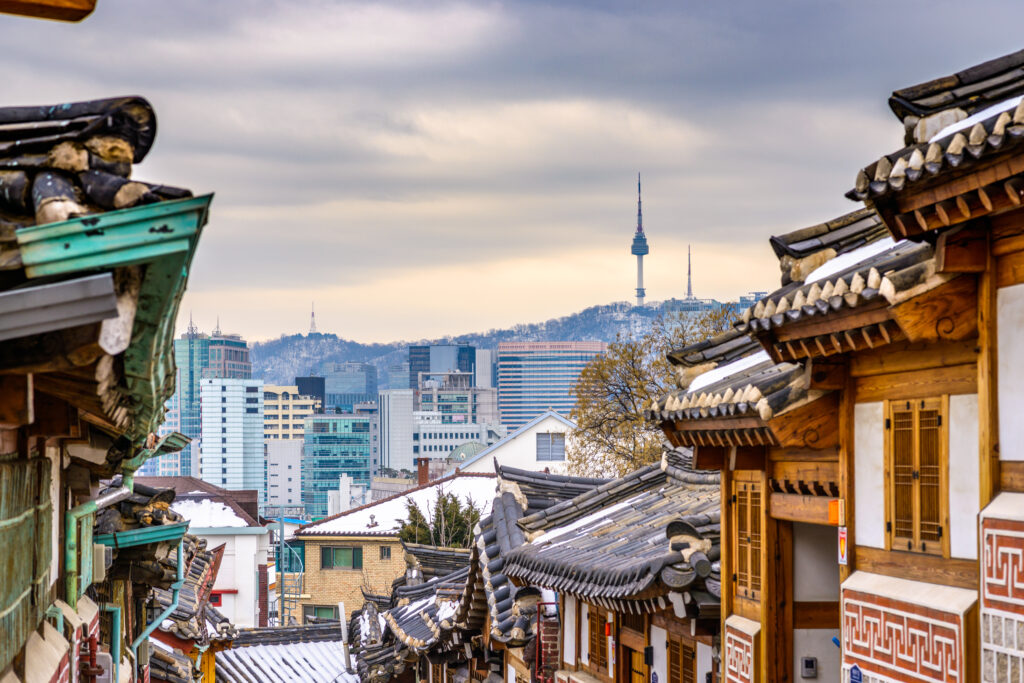
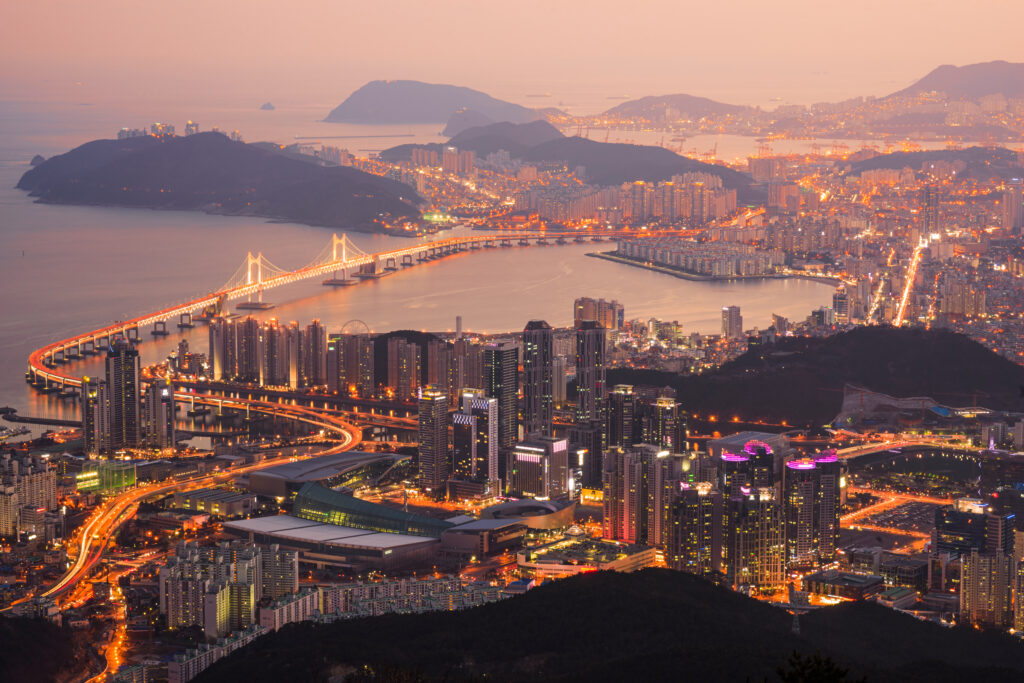
Busan:
Busan, a vibrant coastal city in South Korea, is renowned for its stunning beaches, lively markets, and rich cultural heritage. The city boasts popular attractions like Haeundae Beach, one of the country’s most famous beaches, and the colorful Gamcheon Culture Village, celebrated for its bright, painted houses. For those seeking tranquility, Beomeosa Temple, a historic Buddhist site nestled in the mountains, provides a serene escape from the urban hustle.
Busan’s thriving seafood industry offers a culinary delight at Jagalchi Fish Market, the largest seafood market in Korea, where visitors can savor fresh seafood dishes. The city’s unique blend of modernity and tradition, coupled with breathtaking coastal views, makes it a must-visit destination for travelers exploring South Korea.
Jeju City:
Jeju City, situated on Jeju Island in South Korea, is a stunning destination renowned for its natural beauty and unique attractions. The city is dominated by Hallasan, a dormant volcano that is South Korea’s highest mountain, offering spectacular hiking opportunities and breathtaking panoramic views from its summit. Visitors can also explore the fascinating lava tubes at Manjanggul Cave, unwind on the sandy shores of Jungmun Beach, or enjoy the whimsical sculptures at Jeju Loveland, an outdoor sculpture park focused on themes of love and intimacy.
With its lush landscapes, volcanic terrain, and rich cultural sites, Jeju City provides a captivating blend of adventure and relaxation for travelers. Jeju City is served by Jeju International Airport, located on the island. As the second busiest airport in South Korea, Jeju International Airport connects the island to various domestic and international destinations. The airport features a variety of facilities for travelers, including shopping, dining, and transportation options to help visitors explore the island’s natural wonders and cultural heritage. This airport serves as a vital link for tourists, ensuring convenient access to all that Jeju City has to offer.


